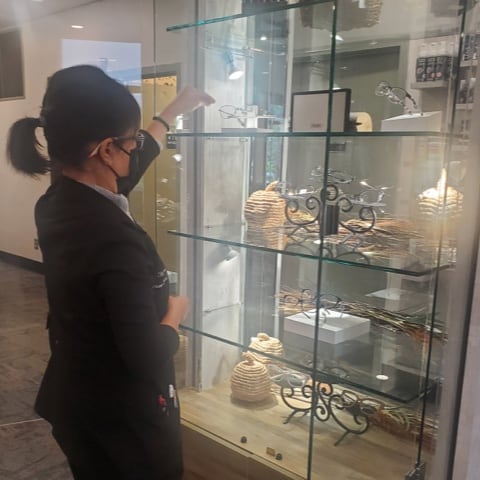Your Long-Term Eye Health
Your eyes are magnificent. They let you view the world and take in incredible sights like snow-capped mountain ranges and make lasting memories with your loved ones. That’s why it’s crucial to protect them from eye diseases like macular degeneration, glaucoma, cataracts, or diabetic retinopathy.
Eye diseases have the potential to affect your eyesight severely. If not managed properly, they can even cause vision loss and blindness. Our team of eye doctors is ready to help diagnose and treat eye diseases so you can look forward to lasting vision for life.
For eye disease diagnosis and management in Anchorage and Wasilla, contact Alaska EyeCare Centers to book your appointment today.
Book AppointmentAssessing Your Risk for Eye Disease
When it comes to your eye health, it’s crucial to self-evaluate your risk and work with us to complete an overall assessment. The leading cause of diseases related to low vision and blindness in the United States is age.
Adults aged 40 and over are at increased risk of developing eye diseases. That risk increases as you reach age 60, which is why older adults should have more frequent eye exams.
During an eye exam, we complete a series of comprehensive tests to determine signs of eye diseases. These tests then help us build your treatment plan to help overcome eye disease and lower your risk of vision loss.
Book AppointmentCommon Eye Diseases
There are several common eye diseases you need to be aware of, especially as you grow older. Some conditions affect the back of the eye, called the retina, while others are more closely related to the eye surface.
Understanding the symptoms and causes associated with each of these diseases can make a world of difference when it comes to assessing your risk and knowing when to book an eye exam.
Age-Related Macular Degeneration
Age-related macular degeneration (AMD) is the leading cause of blindness among adults over the age of 55. It occurs when the macula—located at the center of your retina—becomes damaged over time. Your macula is responsible for your central vision.
AMD can cause that central vision to become blurry, making it difficult to recognize faces, read, or drive. There are 2 types of AMD: dry and wet. Dry AMD occurs when the macula thins, and usually progresses slowly over time. Wet AMD is less common and more severe.
Symptoms of AMD include:
- Blurred vision, even when using glasses
- Straight lines appearing blurry
- Small dark spots appearing in visual field
Cataracts
A cataract occurs when the normally clear inner lens of the eye becomes cloudy. This cloudiness is typically caused by protein buildup in the lens, which can cause blurry vision, faded colors, light sensitivity, and double vision.
Symptoms of cataracts may go unnoticed for years if vision isn’t affected, but can begin developing at around age 40. Certain lifestyle factors like diabetes, smoking, alcohol use, and sun exposure can increase your risk of developing cataracts.
Conjunctivitis
Conjunctivitis causes inflammation in the conjunctiva—the thin layer between the inner eyelid and the sclera. This inflammation causes the eye to appear red and bloodshot due to dilation in the blood vessels in the sclera.
There are 3 types of conjunctivitis: infectious, allergic, and chemical. Each of these forms require distinct treatments, so it’s important to contact your eye doctor if you notice:
- Red eyes
- Itching
- Burning
- Swelling
Diabetic Retinopathy
Diabetes is a determining factor in a few different eye conditions like cataracts and glaucoma. It can also cause specific diabetes-related eye diseases like diabetic retinopathy.
Diabetic retinopathy affects the blood vessels in the retina at the back of the eye. With increased blood sugar levels due to diabetes, the blood vessels can slowly deteriorate until they cause vision loss and even blindness.
Anybody with diabetes is at risk of developing diabetic retinopathy; however, it is far more common in those who don’t manage their condition adequately.
Dry Eye Disease
Dry eye disease is an uncomfortable condition affecting the eye surface. There are 2 forms of dry eye: aqueous deficient and evaporative. Aqueous deficient dry eye occurs when a person doesn’t produce enough tears.
Evaporative dry eye is more common and happens when the tears a person produces aren’t high quality. This lack of quality is often caused by meibomian gland dysfunction (MGD). MGD occurs when the glands that deliver protective oil to the eye surface are blocked.
Glaucoma
Glaucoma is often referred to as the “silent thief of sight.” Glaucoma occurs because of damage to the optic nerve at the back of the eye, often due to increased intraocular pressure. Symptoms often go unnoticed, so it’s vital to have an eye exam to help to establish an early diagnosis.
There are many different types of glaucoma, the most common of which is open-angle glaucoma. People over 60, African Americans, and those with a family history of glaucoma are most at risk for developing the disease.
Looking After Your Eye Health
With comprehensive testing and analysis of your symptoms, we can create a personalized treatment plan that preserves your vision and prioritizes your eye health. Get in touch with us to schedule your visit today.
Book AppointmentOur Locations
Downtown Anchorage
Across the street from Delaney Park, our goal is excellence in all of your eye care needs!
- 907-272-2557
- 907-274-4932
- 1345 West 9th Avenue
- Anchorage, AK 99501
Hours
- Monday: 8:30 AM – 6:00 PM
- Tuesday: 8:30 AM – 6:00 PM
- Wednesday: 8:30 AM – 6:00 PM
- Thursday: 8:30 AM – 6:00 PM
- Friday: 8:30 AM – 6:00 PM
- Saturday: Closed
- Sunday: Closed
Matsu Valley
Conveniently located off of East Parks Highway next to the Goodwill, we strive to meet every eye care need!
- 907-376-5266
- 907-373-1887
- 1700 East Parks Hwy #300
- Wasilla, AK 99654
Hours
- Monday: 8:00 AM – 5:30 PM
- Tuesday: 8:00 AM – 5:30 PM
- Wednesday: 8:00 AM – 5:30 PM
- Thursday: 8:00 AM – 5:30 PM
- Friday: 8:00 AM – 5:30 PM
- Saturday: Closed
- Sunday: Closed
Our Brands














